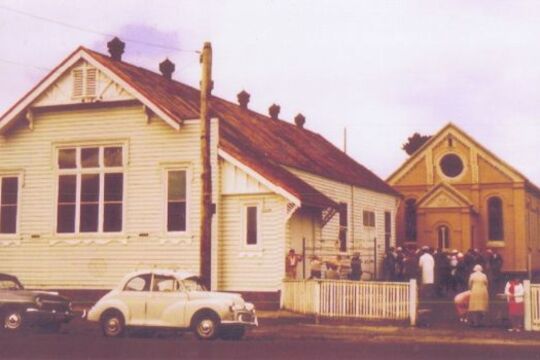Showing 2 items matching "Protestant churches"
-

Restoring St Nicholas
... Protestant churches ...St Nicholas church in Humffray St, Ballarat East, was built in 1867. Originally named the Bible Christian Church, it was built by Cornish miners in the evenings and weekends after they had returned from their work at the diggings.
Like most buildings of its time it was built to last, constructed of solid brick with lime mortar. By the 1970s, the mortar was crumbling and the church community of the time re-mortared it with cement, a process we now know was incorrect for buildings of its age. The cement mortar, combined with rising damp, caused salt attack in many of the original bricks and the building literally began to crumble.
In 2009 the Greek Orthodox community of St Nicholas approached the City of Ballarat, Heritage Victoria and the trade school at the University of Ballarat to form a unique partnership to restore the church. This project allowed young apprentices to learn traditional trade skills and practice the technique of mixing and using lime mortar. In the process, the humble church has had its life extended, and the Greek community have a religious and cultural centre they can use for generations to come.
-

Against the Odds: The victory over conscription in World War One
... Mainstream Protestant churches in Australia overwhelmingly supported the war. However, small, socially progressive churches were amongst the strongest supporters of the anti-conscription campaign. At the start of World War One, nearly eight in ten ...In October 1916 and December 1917 two contentious referendums were held in Australia, asking whether the Commonwealth government should be given the power to conscript young men into military service and send them to war overseas.
These campaigns were momentous and their legacy long-lasting. This is the only time in history that citizens of a country have been asked their opinion about such a question, and the decisive 'No' vote that was returned remains the greatest success of the peace movement in Australia to date. Yet the campaigns split families, workplaces and organisations, and left an imprint on Australian politics that lasted for decades.
Many of the actors and events that were central to these campaigns were based in the northern Melbourne suburbs of Brunswick and Coburg. In many ways, these localities were a microcosm of the entire campaign. Against the Odds: The Victory Over Conscription in World War One tells the story of the anti-conscription movement in Australia during World War 1 through this lens.
